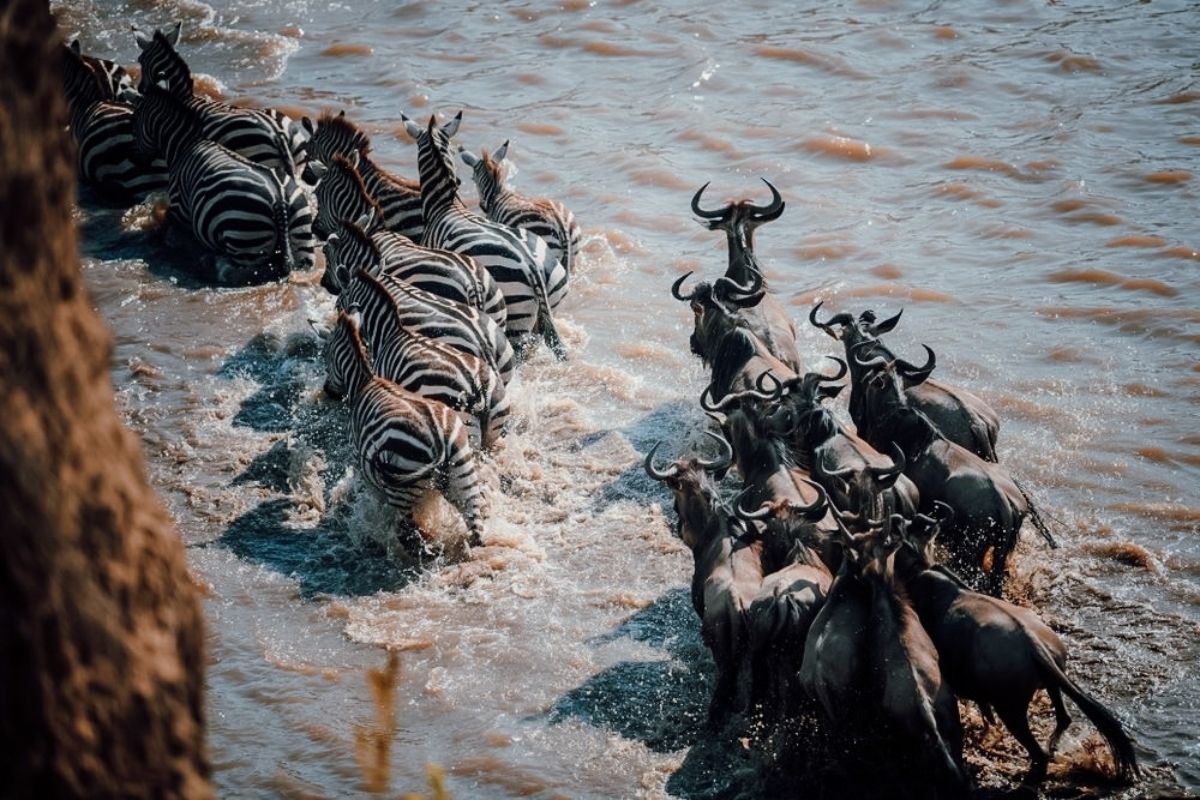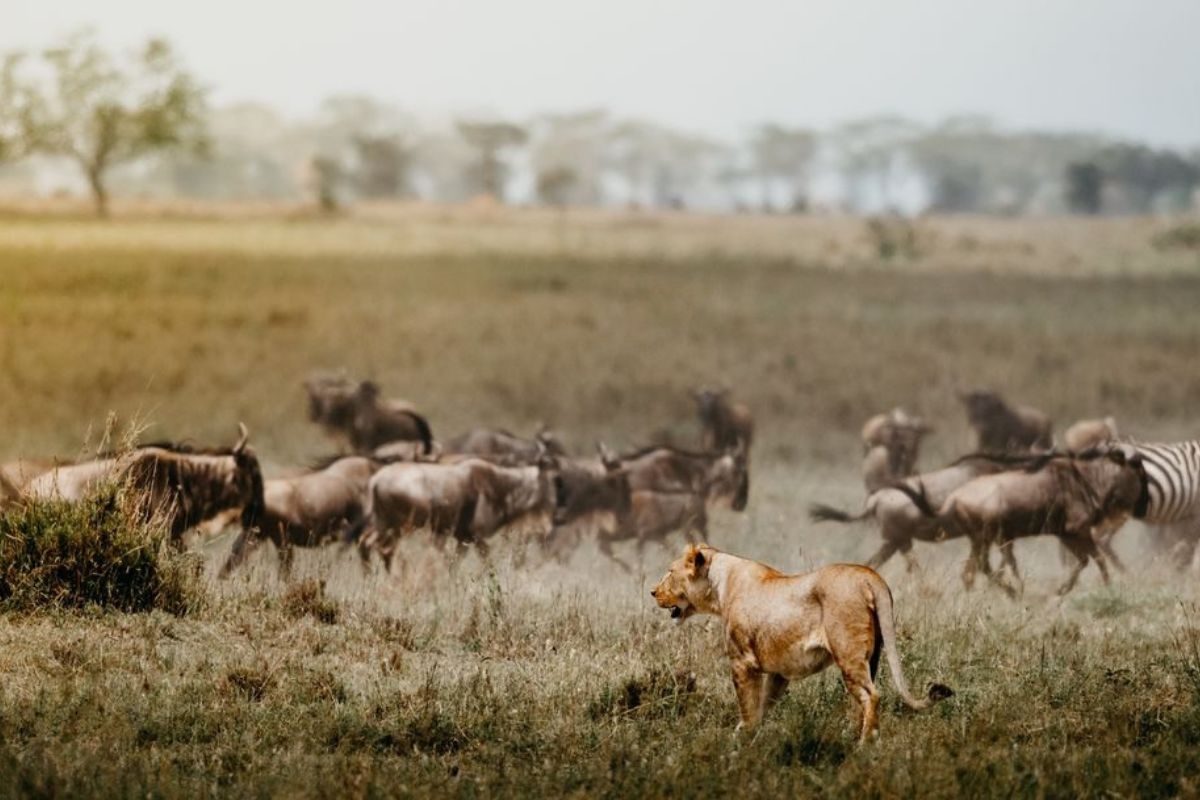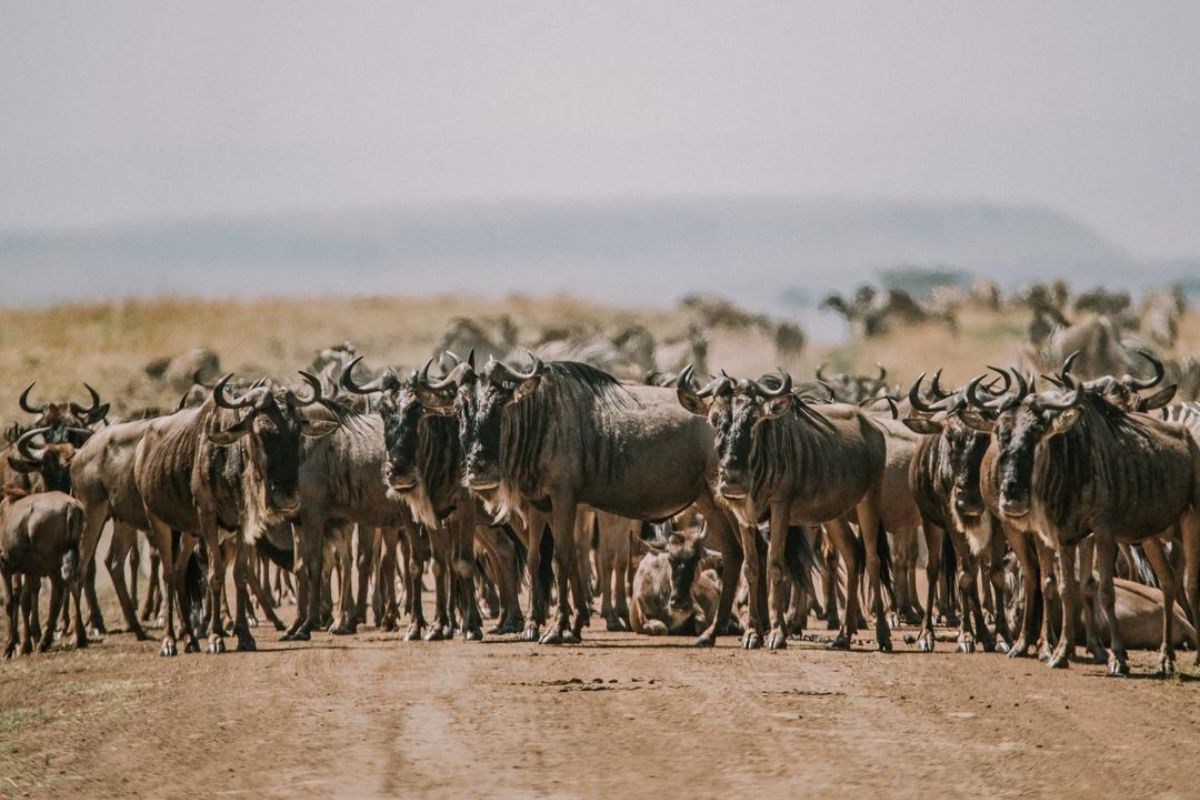A little bit about Serengeti National Park
Serengeti National Park is a World Heritage Site full of wildlife. It has over 2 million animals like zebras and antelopes, 4,000 lions, 1,000 leopards, 550 cheetahs, and about 500 kinds of birds. The park covers almost 15,000 square kilometers. Come with us on a safari to explore the wide Serengeti plains with trees and rocky hills, where you can see lions ruling their territory. Watch the Great Migration or spot a leopard hiding in the forest. You can also take a hot air balloon ride at sunrise for an amazing view. We offer places to stay for every budget, and you might even hear lions roaring at night.
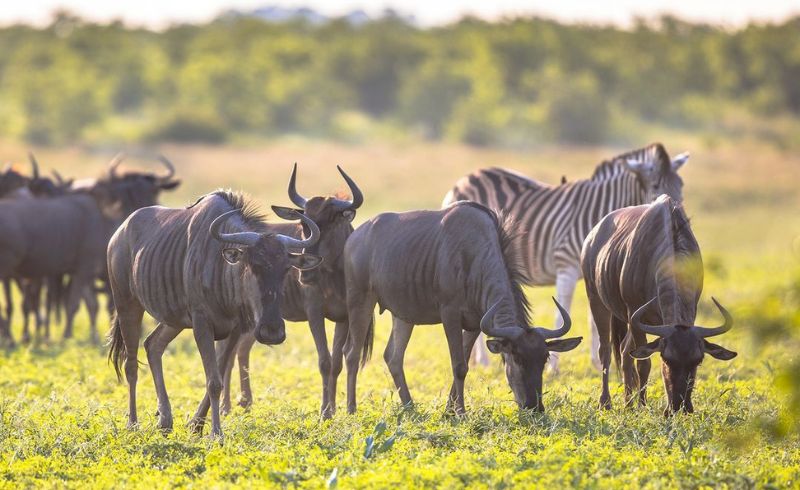
Highlights
- The Serengeti has the world’s oldest ecosystem with unique plants and animals.
- Crocodiles in the Mara River hunt by dragging prey underwater and breaking them apart
- About 1.5 million wildebeest and 200,000 zebras join the Great Migration each year.
- Zebras and wildebeest live together because they eat different parts of the same plants.
- Around 3,000 lions in the Serengeti follow the migrating herds.












How do I find the Great Migration in Africa?
The Great Migration mainly happens in two places: the Serengeti National Park in Tanzania and the Masai Mara National Reserve in Kenya.
Serengeti National Park, Tanzania: This is one of the best spots to see the Great Migration. It’s a huge park in northern Tanzania. To get there, you can fly into Kilimanjaro International Airport or Arusha Airport. From there, you can take a short flight or drive to the park.
Masai Mara National Reserve, Kenya: This is another great location. The Masai Mara is in southwestern Kenya. You can fly into Nairobi, the capital city of Kenya, and then take a short flight or drive to the reserve.
With Seko Tours, we make it easy for you to access these places. Our safari packages include transportation and guided tours to get you right where the migration happens.
Serengeti Wildebeest Migration Map
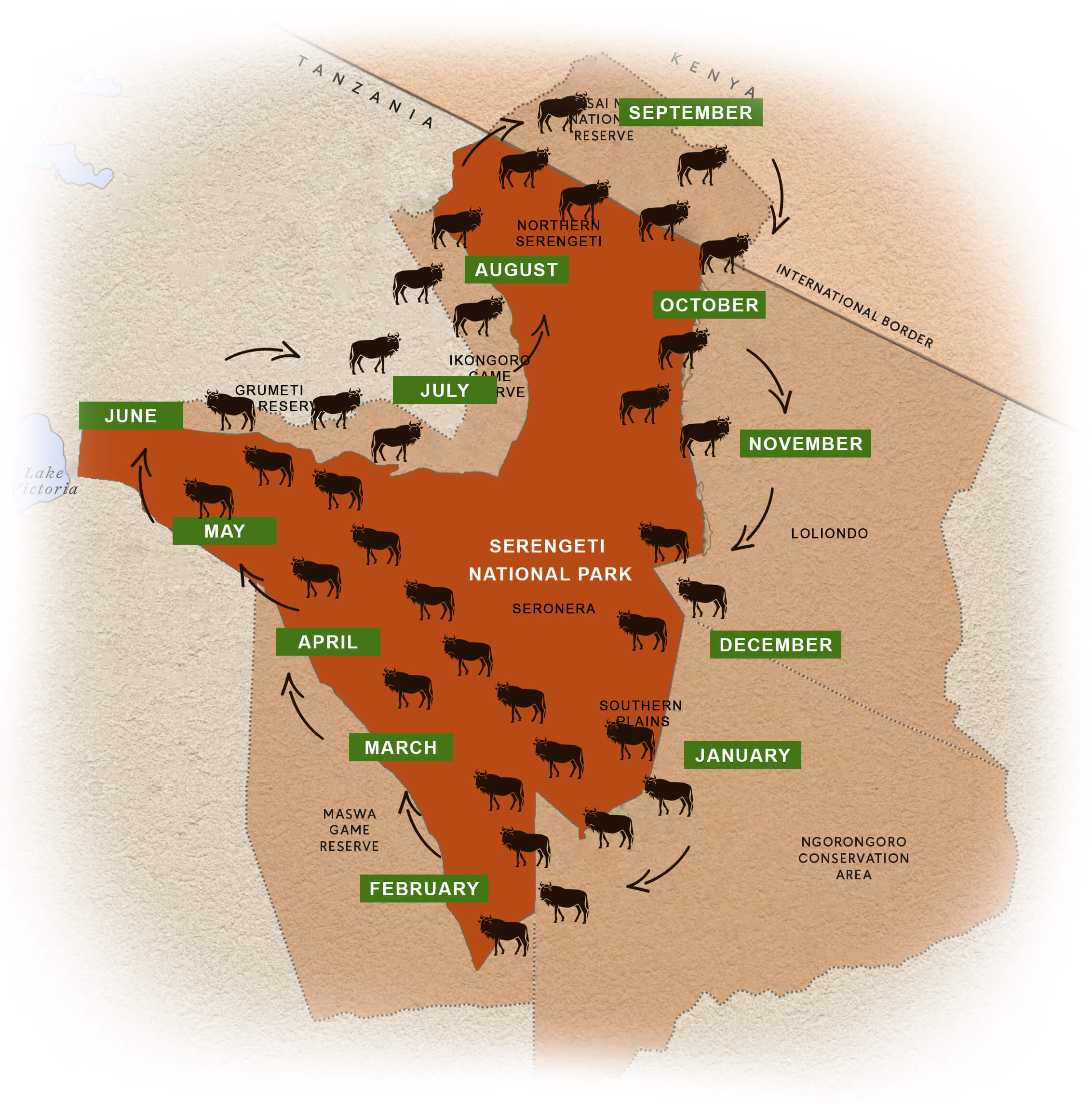
Serengeti Wildebeest Migration Photo
Complete Guide to a Wildebeest Migration Safari in 2026
The Great Migration: What, When and Where?
What is the Wildebeest Great Migration?
The Wildebeest Great Migration, often referred to as one of the “Seven Wonders of the Natural World,” takes place across the Serengeti in Tanzania and the Maasai Mara in Kenya. Each year, around 1.5 million wildebeests, along with hundreds of thousands of zebras, gazelles, and other animals, embark on a perilous journey covering approximately 1,200 miles. This migration is driven by the search for fresh grazing and water, dictated by the region’s seasonal rainfall patterns. The journey is fraught with dangers, including predators like lions and crocodiles, as well as challenging river crossings and harsh terrain. Despite these obstacles, the migration is a critical ecological phenomenon, ensuring the survival of the species and maintaining the balance of the ecosystem.
Wildebeest Migration Tour Packages
Experience exciting safaris, fascinating cultural encounters, and stunning landscapes on our carefully planned tours.
10 Days Great Wildebeest Mara River Crossing
- 10 Days & 9 Nights | Bush to Beach Safari
Starting From
On Request
Per Person On Twin Sharing
9-Day Budget Serengeti Wildebeest Migration Safari
- 9 Days & 8 Nights | Bush to Beach Safari
Starting From
On Request
Per Person On Twin Sharing
8 Days Tanzania Safari
- 8 Days & 7 Nights | Northern Tanzania Safari
Starting From
On Request
Per Person On Twin Sharing
8 Days Ultimate Northern Tanzania Safari
- 8 Days & 7 Nights | Northern Tanzania Safari
Starting From
On Request
Per Person On Twin Sharing
8 Days Wildebeest River Crossing Safari
- 8 Days & 7 Nights | Wildebeest River Crossing Safari
Starting From
On Request
Per Person On Twin Sharing
5 Days Wildebeest Migration Calving Safari
- 5 Days & 4 Nights | Northern Tanzania Safari
Starting From
On Request
Per Person On Twin Sharing
5 Days Ndutu Package Safari
- 5 Days & 4 Nights | Ndutu - Serengeti
Starting From
On Request
Per Person On Twin Sharing
4-Day Tanzania Budget Safaris
- 4 Days & 3 Nights | Budget Safaris
Starting From
On Request
Per Person On Twin Sharing
How the Great Migration moves throughout the year
Serengeti Wildebeest Migration Month by Month
Whether the wildebeest are having calves or crossing rivers to escape predators, they are always moving throughout the year. Continue reading to find out where the Great Migration usually is at different times of the year, or click on a month below to see what happens during that time.
The Great Migration in January, February and March
Each year around January, the migration ends its journey south, moving along the eastern edge of the Serengeti into the Ngorongoro Conservation Area. Here, the plains have nutritious grass, providing ideal conditions for the herds to raise their newborn calves.
Although the migratory cycle has no real beginning or end except for birth and death, it makes sense to consider the birthing season as the start of the migration. In late January or February, the herds occupy the short-grass plains on the lower northern slopes of the Ngorongoro Crater highlands and around Olduvai Gorge. About 400,000 calves are born here over two to three weeks, which is nearly 8,000 new calves every day.
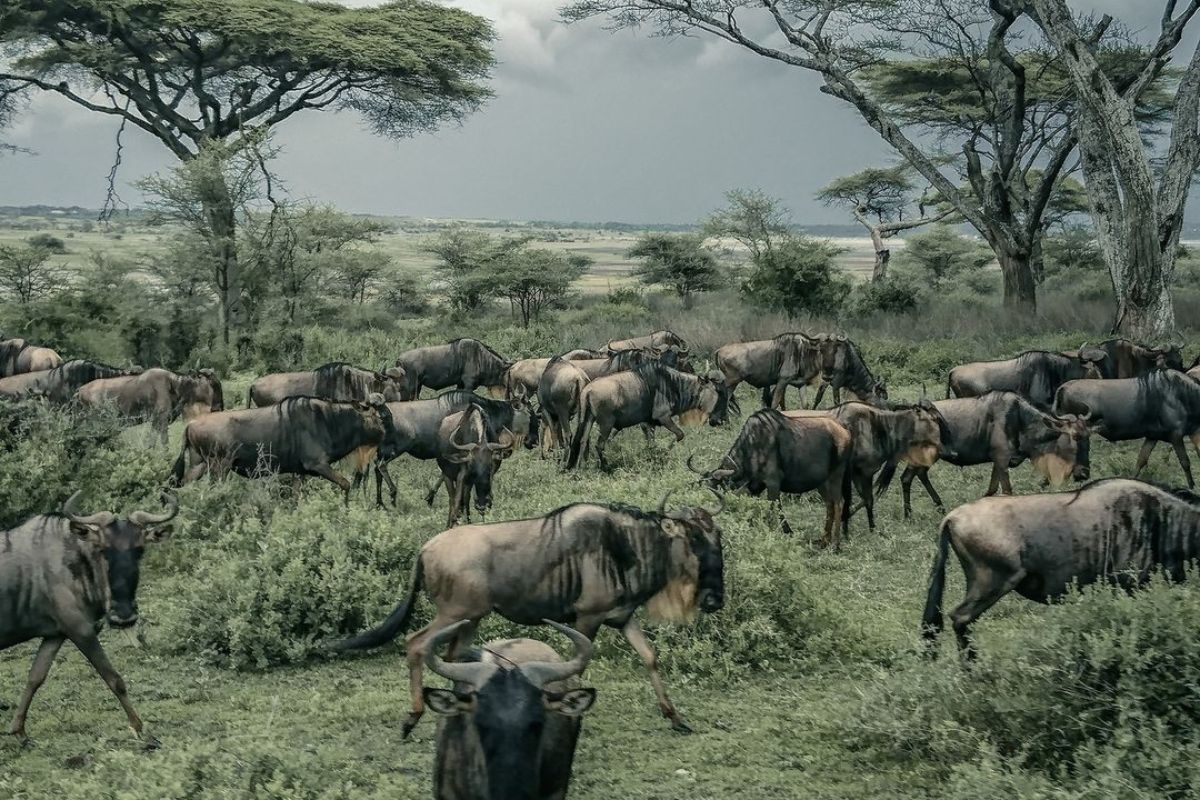
The Great Migration in April and May
In April and May, after having their young in February and March, the wildebeest herds start moving northwest to find fresh grass in the central Serengeti. Thousands of zebras and smaller groups of antelope join them on this journey.
This movement is part of the larger cycle known as the Great Migration. During this time, the animals travel together in search of food and water, creating one of the most impressive wildlife spectacles on Earth. The journey is vital for their survival, as they constantly need to find new grazing areas.
The Great Migration in June and July
In June, the dry season begins, and many wildebeest gather in the Western Serengeti and along the southern banks of the Grumeti River. Each migrating animal must cross this river, which is full of crocodiles – the first of many dangerous river crossings.
As June turns into July, hundreds of thousands of wildebeest and zebras continue moving north along the western edge of the park towards an even more dangerous obstacle: the Mara River in the northern Serengeti. These river crossings are some of the most thrilling wildlife events in the world. They usually start in July when the high season begins, but the exact timing depends on nature.
The Great Migration in August, September and October
By August, the herds have crossed the Mara River and are spread throughout the northern region of the Masai Mara, with many remaining in the northern Serengeti. When the river is full, the crossings are very dangerous due to panic, strong currents, and waiting predators, causing many animals to die. Even when the river is calmer, crocodiles, lions, and other predators still kill many wildebeests. Some crossings have only a few animals, while others have a continuous flow of animals for hours.
By September to October, the main chaos has ended, and the herds gradually move eastward. However, the wildebeests will face the Mara River again as they prepare to cross it for their return journey southward.
The Great Migration in November and December
After the short rains in late October and early November, the wildebeest move from Kenya into the eastern Serengeti, passing through the Namiri Plains, known for many cheetah sightings. By December, they spread out across the eastern and southern areas.
In the early months of the new year, the rains make the grass in the southern Serengeti lush and green. This attracts the herds of wildebeest, zebras, and other plains animals. The cycle continues as the calving season begins again.
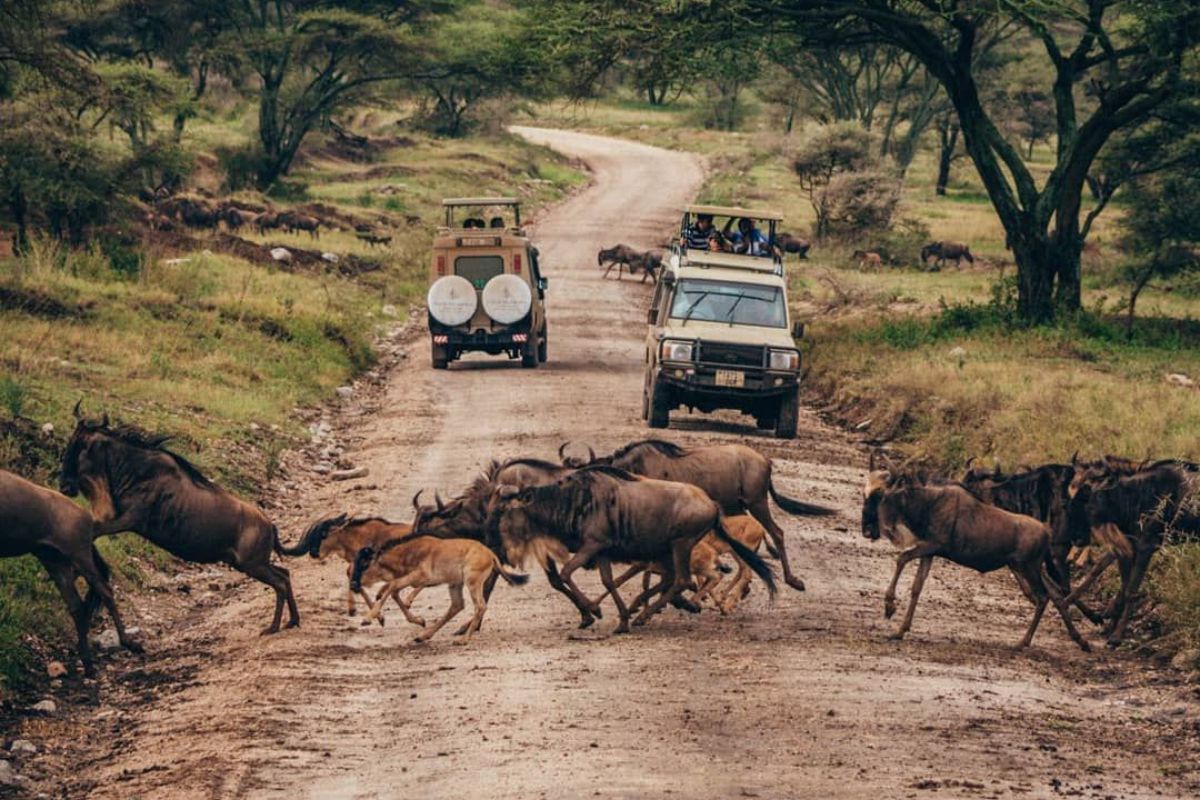
Ready to plan a Great Migration safari in 2026?
Safari Dreams
Unforgettable Experiences
Popular questions about Serengeti Wildebeest Migration
Our packages usually include accommodation, meals, transport, game drives, park fees, and a professional guide. Flights, visas, and personal expenses are typically excluded unless stated otherwise.
Yes, we specialize in tailor-made safaris. You can adjust destinations, activities, and accommodations to match your needs.
The best time is during the dry season (June to October) when wildlife is easier to spot. However, the Wildebeest Migration is spectacular between January and March or July and September.
Tanzania is a safe and friendly destination. Our team ensures you are well taken care of throughout your journey.
Absolutely! Many travelers end their safari with a relaxing stay on Zanzibar's beautiful beaches. We can arrange everything for you.
We accept bank transfers, credit cards, and mobile money. Payment details will be shared during the booking process. Read More here
We have a cancellation policy in place. Refunds depend on how close to the travel date you cancel. We recommend travel insurance for added protection. Read More here
Pack light clothing in neutral colors, comfortable walking shoes, a hat, sunscreen, binoculars, and a camera. Don’t forget insect repellent and any personal medications.
Yes, we have family-friendly safari options with activities and accommodations suitable for children.
Of course! Just let us know your dietary needs in advance, and we’ll ensure you’re well taken care of.
We use 4x4 safari vehicles with pop-up roofs for excellent wildlife viewing and photography. They are spacious and well-maintained.
Most visitors need a visa to enter Tanzania. You can get it online or upon arrival. We’re happy to assist with any questions.
Yellow fever vaccination is required if you’re arriving from a country with a risk of yellow fever. Malaria precautions are also recommended. Consult your doctor for advice.
It’s best to book 6-12 months in advance, especially during the peak season, to secure your preferred itinerary and accommodation.
Yes, Tanzania is one of the best places to see the Big Five: lions, leopards, elephants, buffaloes, and rhinos. Popular parks like Serengeti and Ngorongoro Crater offer great chances to spot them.
If your question is not listed, please contact us from here.

